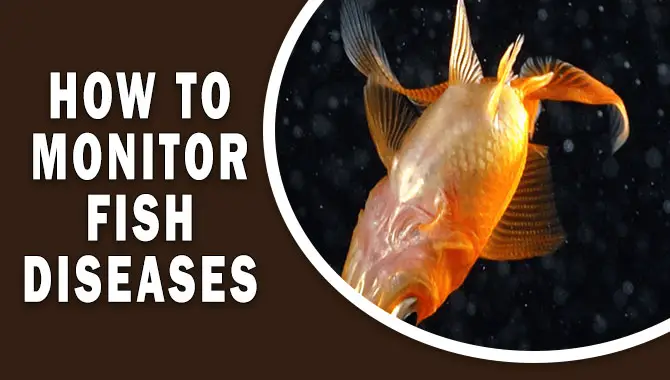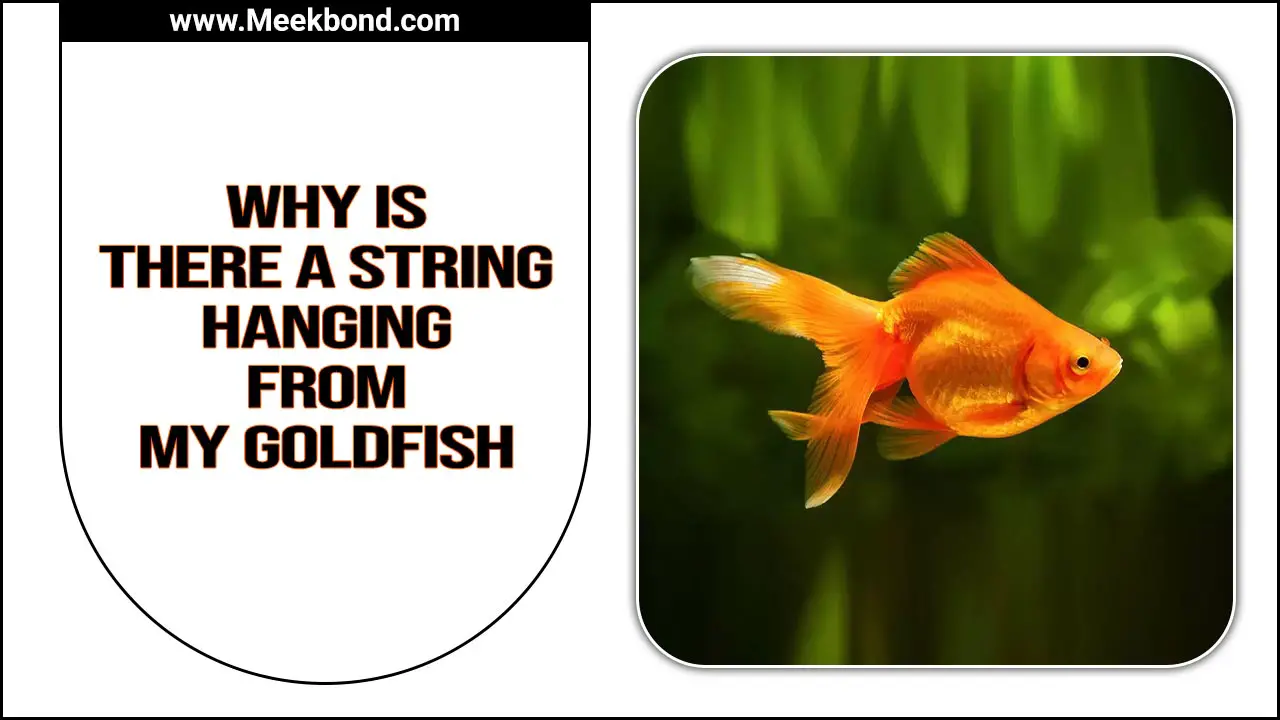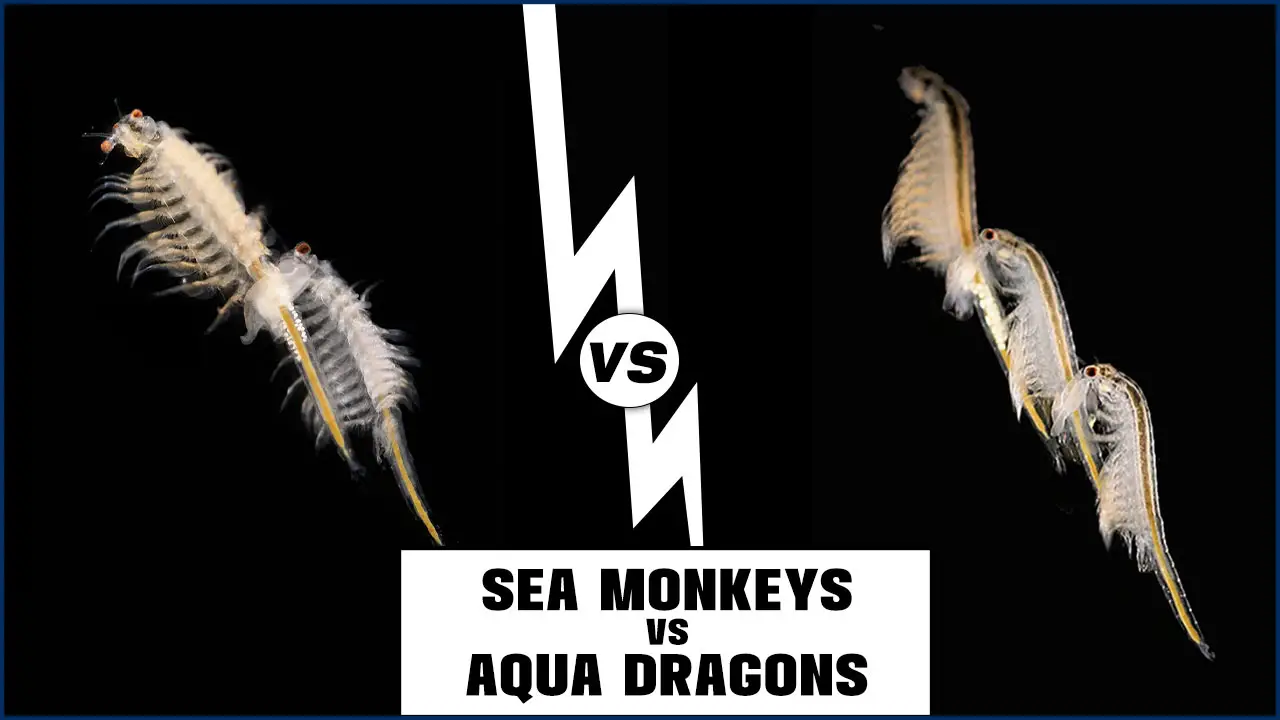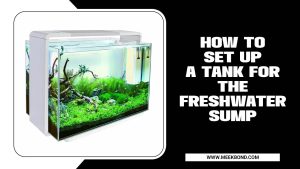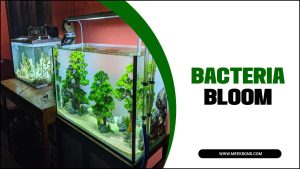Are you an avid fisherman looking to create a thriving ecosystem underwater? Or maybe you are an environmentalist seeking to restore marine habitats?
Whatever your reason, building artificial reefs for fish habitats is a great way to help the local marine ecosystem. Here, we will guide you through creating your artificial Reef in seven easy steps. We covered you from choosing the right location and materials to monitoring and maintaining it.
We’ll also discuss the benefits of artificial reefs, including increased fish populations and enhanced biodiversity. Plus, we’ll explore different types of artificial reefs that you can build based on your needs. So, let’s dive in & read our information on how to create artificial reefs for fish habitats.
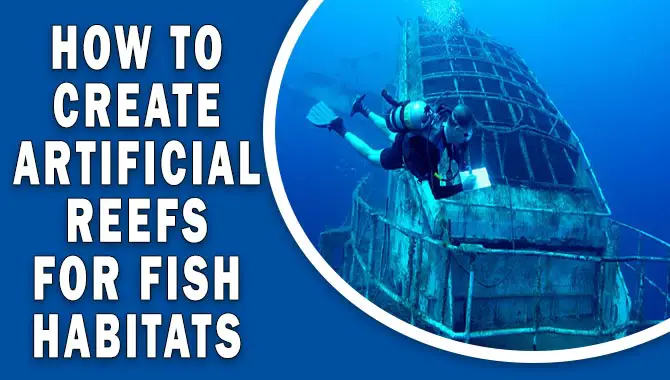
What Are Artificial Reefs?
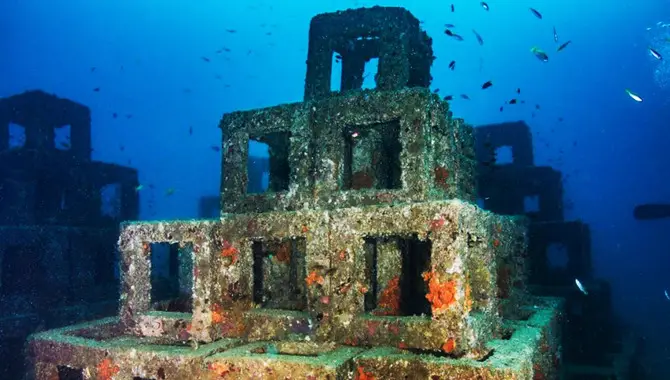
Artificial reefs are man-made structures that are designed to mimic natural reef environments. They typically create by sinking old ships, concrete blocks, or other materials onto the ocean floor. These structures provide a marine life habitat and can help restore damaged or depleted coral reefs.
Artificial reefs also provide a destination for divers and fishermen, which can benefit local communities economically. However, there are some concerns about the environmental impact of artificial reefs, particularly if they are not properly managed or maintained. Despite these concerns, artificial reefs continue to use as a tool for marine conservation and ecosystem restoration worldwide.
Materials You Need Before Creating Artificial Reefs For Fish Habitats
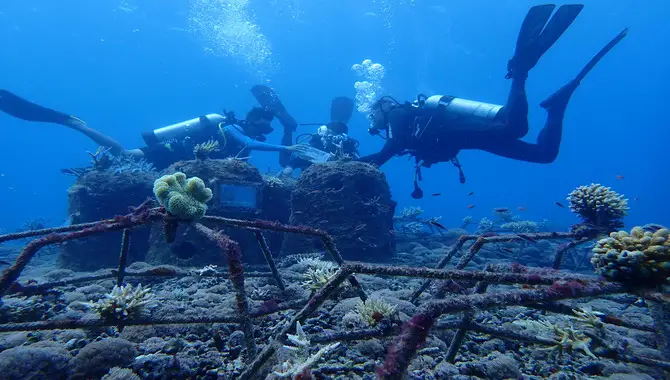
When creating artificial reefs for fish habitats, choosing materials is essential for providing suitable structures and surfaces for marine organisms to inhabit and thrive. It’s important to note that the choice of materials should be made in consultation with local authorities, marine biologists, and conservation organizations.
The materials should be non-toxic, stable, and safe for marine life, and the placement of the reef structures should consider the local environmental conditions and the target fish species. Here is a list of materials commonly used in the construction of artificial reefs:
- Concrete modules
- Ships and barges
- Rock formations
- Discarded tires
- Concrete blocks or pipes
- Coral fragments
- Eco-friendly materials
How To Create Artificial Reefs For Fish Habitats In 7 Steps
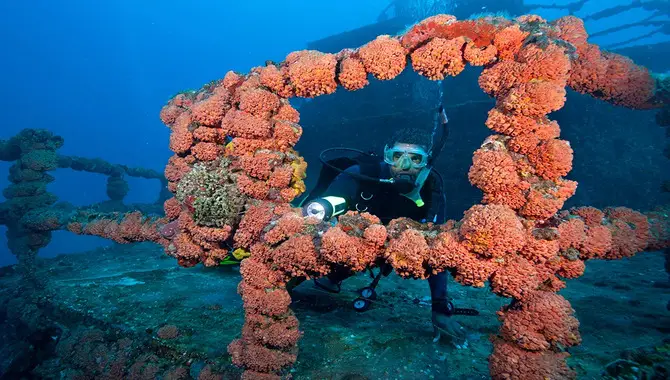
Artificial reefs can provide habitat for fish and enhance recreational fishing opportunities. Following these steps is crucial when creating an artificial reef for fish habitats.
The benefits of creating artificial reef structures go beyond just enhancing marine life populations; they also increase biodiversity in estuaries while supporting fisheries management programs across Florida and Georgia. Here are seven steps on how to create artificial reefs for fish habitats :
Step 1: Choose Location
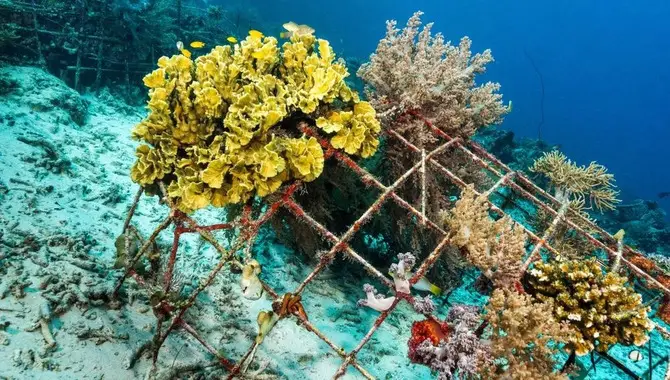
The right location is key to creating a successful artificial reef project for fish habitats. Factors such as water depth, currents, and proximity to natural reefs or other structures must consider while choosing a location. Adequate research of local regulations and acquiring necessary permits are essential before starting construction.
Guidance on the types of fish species that could benefit from an artificial reef in your area can obtain by consulting with local fishing and conservation groups. Environmental factors such as weather patterns and erosion should also be considered while selecting a location.
Step 2: Test Reef Design Outside Of Water
Testing your reef design outside the water is essential before starting your artificial reef project for fish habitats. You can mock your design using materials such as PVC pipes, sandbags, or cement blocks. Please place it in a location similar to where you plan to install the actual Reef and observe how it holds up against wind, waves, and other environmental factors.
Testing an artificial reef’s design before installation helps ensure its stability and durability in the long run. You can avoid potential problems with your Reef’s stability later by making necessary adjustments during this stage.
Proper testing methods for artificial reef construction projects anywhere from Florida’s estuaries to Georgia’s fisheries management areas or even North Carolina’s coastline are sure to be successful, leading to increased fish populations and biodiversity.
Step 3: Move Materials To Site
Transporting materials to the site is one of the essential steps in constructing an artificial reef for fish habitats. When moving these materials, several crucial factors need to be considered. Firstly, it is vital to select a location that is accessible and safe for transporting these materials.
Secondly, ensuring you have all the necessary equipment, like boats or trucks, to transport these materials safely is equally important. Lastly, eco-friendly artificial reef construction material can help keep marine environments healthy while supporting fisheries management efforts.
Step 4: Build Your Base
Creating a sturdy base that can withstand disturbances is essential to build an artificial reef for fish habitats. Suitable materials like concrete blocks or old tires should be chosen for constructing the base. After placing the chosen material in the desired location, it should secure in place with anchors or chains.
For an effective artificial reef project, add additional layers of materials like rocks, logs, and PVC pipes. This will create a complex structure that potentially attracts diverse marine life, such as coral reefs, and increase biodiversity.
Consider adding sheltered areas within the Reef where fish can hide and rest. Such cases often result in increased biomass and an improved fish population over time. Deploying artificial structures has economic benefits, too, with increased catch rates being recorded, making them popular among anglers and divers alike.
Step 5: Add Levels 2, 3, And 4
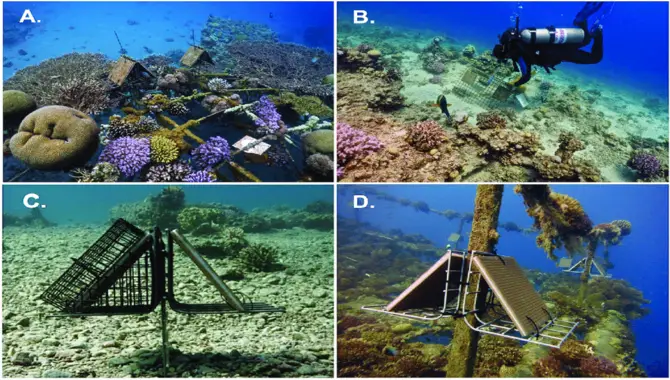
Artificial reef construction offers many benefits, such as improved fisheries management and enhanced biodiversity. To complete the process of successfully creating artificial reefs for fish habitats and attracting different marine life to your reef sites in Florida and Georgia estuaries and shorelines, add multiple levels using materials like PVC pipes or cinder blocks (levels 2-4).
Securely fasten each level to avoid disturbance by natural occurrences like storms or disturbances from commercial fishing activities. Different fish species prefer different depths; hence creating diverse environments with varying depths can attract more biomass of various fish species and enhance the economic benefits for anglers and divers alike.
Step 6: Add The 5th Level And The Center Support
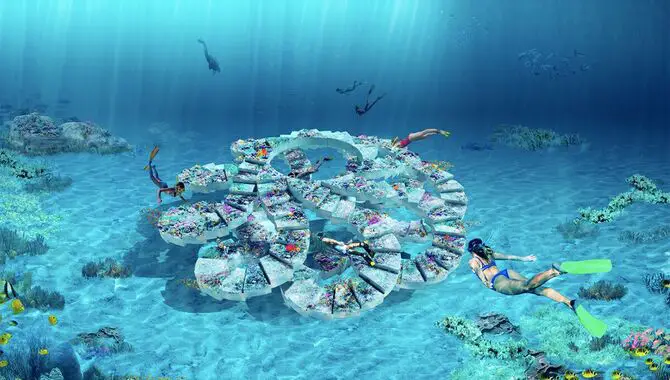
Adding the 5th level and centre support is critical when constructing an artificial reef. Doing so creates more surface area for marine life within the reef habitat. Securing the centre support with PVC pipes and cinder blocks while adding the final level is important to ensure stability and longevity.
Materials that are safe for marine life are utilised when designing structures within fisheries management plans since they will not leach harmful chemicals into the water. By cutting holes or creating cutouts in these levels, you can offer additional protection and hiding spaces for fish species that call this artificial habitat home.
Step 7: Monitor, Maintain And Protect
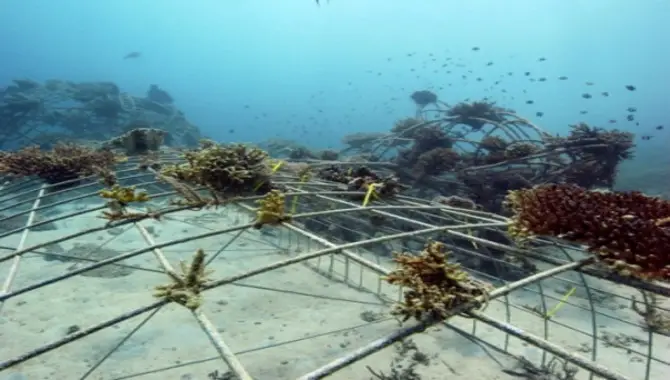
After creating an artificial reef using synthetic materials in your preferred location, you must monitor, maintain, and protect it to ensure its longevity. Regularly check for any damage caused by weather or marine life and make necessary repairs or additions. Protect the fish habitat from human activities like fishing or anchoring boats that may harm the structure. Educate anglers and divers about the significance of preserving marine resources.
Artificial reef programs are gaining popularity across various states, such as Florida, Georgia, North Carolina, and South Carolina. Fisheries management has also recognized that building artificial reefs can increase fish populations while enhancing biodiversity in saltwater environments. Reef design can vary depending on latitude and climate change patterns but has proven to increase biomass catch rates in estuaries and shorelines.
The economic benefits of artificial reef construction are significant as they provide recreational fishing opportunities while mitigating disturbances of natural habitats such as coral reefs. Synthetic materials like concrete pipes, bamboo, and wrecks use to construct artificial structures that mimic natural reefs’ characteristics. Special management zones have been established to manage artificial reefs’ deployment at specific reef sites.
Benefits Of Fish Habitats
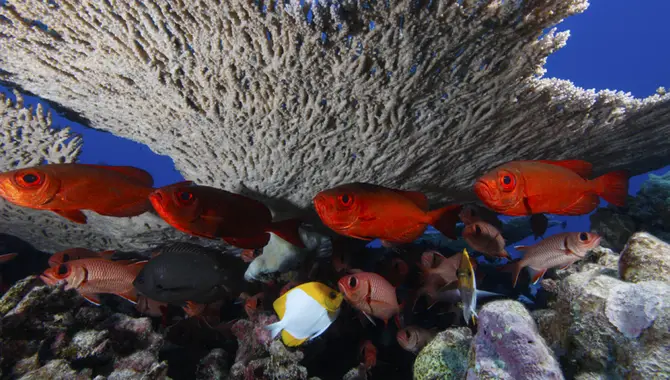
Fish habitats play a crucial role in marine conservation. From natural habitats like coral reefs to synthetic structures like artificial reefs built using cement or concrete pipes, these environments offer shelter and protection for sea life.
They enhance the area’s biodiversity by attracting different types of marine creatures like invertebrates and algae, but they also help with fisheries management by increasing catch rates and biomass. One of the most significant benefits of artificial reef construction is its potential economic impact on the surrounding community; it draws recreational anglers to the area, increasing tourism revenue. Building artificial reefs is beneficial for the environment and an exciting DIY project for individuals who care about marine conservation.
Conclusion
Creating artificial reefs can be an incredibly rewarding experience. Not only are you providing a haven for marine life, but you are also contributing to the overall health of our oceans and planet. Remember to choose a location suitable for your reef design and test it outside water before moving materials on-site.
Once you have built your base and added levels, don’t forget to monitor, maintain, and protect your creation occasionally. The benefits of fish habitats are plentiful, including increased fish populations and enhanced biodiversity. You can choose from different types of artificial reefs based on your specific goals. We hope the above guideline on how to create artificial reefs for fish habitats will help you make a perfect artificial reef.
FAQs
Can You Get Sea Life From Artificial Reefs?
Yes, sea life can be attracted to and thrive on artificial reefs. Artificial reefs provide a habitat for various marine species, including fish, crustaceans, and mollusks. However, the methods used to collect sea life from natural reefs may not be applicable to artificial reefs.
How Did Artificial Reefs Help Loggerhead Sea Turtles?
Artificial reefs provide a habitat for the prey of loggerhead sea turtles, making it easier for them to find food.
What Type Of Fish Does An Artificial Reef Attract?
Artificial reefs can attract a variety of fish, including snapper, grouper, and baitfish.
What Is Artificial Reef?
An artificial reef is a human-made underwater structure that is placed in marine environments to provide habitat for marine species, prevent erosion, or create areas for recreational activities like diving and fishing.
What Type Of Reef Structures Are Most Effective For Fish Habitat?
Artificial reef structures that mimic natural reefs, such as those with complex shapes and multiple levels, are the most effective for fish habitat.

Aquarium passion is all about connecting with the aquatic life and providing education to the public on the importance of these creatures. We showcase a wide variety of marine life through our exhibits as well as working with schools to provide unique learning opportunities for students of all ages.

